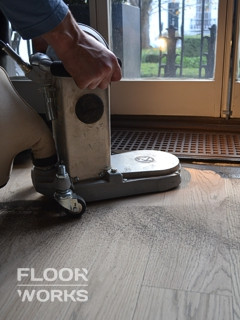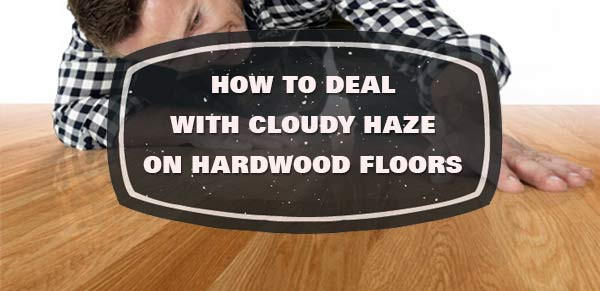How to fix squeaky floorboards?
In this article, we discuss common reasons for squeaky and creaking floorboards, how to prevent that and how to handle the issue.
Do your floorboards squeak from time to time? Do they squeak all the time? No matter if it is just occasionally, or it is all the time, the creaky noise wood floors sometimes tend to make is definitely not a pleasant one. So, do not neglect it, because, besides the noise that drives you crazy, the creaky noise can be a sign of a bit more serious problem you might need to deal with. Hands down, wood flooring problems and the repair services linked to them are definitely something you wouldn’t enjoy the experience because major issues require pretty much expensive, energy- and time-consuming repairs. In order to prevent that and in order to bring peace and relaxation to your everyday life, today we would like to discuss why wooden floors start to make the noise, how you can prevent that and how to deal with this noisy imperfection if your floorboards already struggle with it.
Why are floorboards squeaky?
Generally speaking, wooden floors are an extremely hard-wearing and long-lasting thing. If you maintain them properly and regularly, a natural wood floor can last up to a century! Amazing, right?! However, even when maintained properly and looked after with care and attention, they might start struggling with some issues and problems. It is not something to worry a lot for because in most of the cases there is a solution for every problem. Wood flooring is a product that is made from natural wood and lumber materials only, no matter if solid wood or engineered wood. Natural wood, even when cutting into floorboards, remains responding to its environment in its natural way. With that been said, one of the most common causers for wood flooring issues are moisture, humidity and regular temperature changes. Due to these reasons and changes in the environment, wood flooring responds with a natural “movement” that consists of contracting and expanding. Generally, this natural movement is nothing to worry about and most of the time your wooden floor will overcome it itself, soon being back to its initial condition. However, sometimes this movement can cause some more serious and major problems like loose or broken boards, chipping finish, weakened glue and more. Furthermore, the creaky noise your floorboards might struggle with also might be a result of serious moisture issues.
When exposed to direct sunlight, extensive everyday use, high traffic and heavy footfall, your wooden floor will start to get dry and worn faster. Once wood starts losing its natural flexibility and elasticity, the floorboards might start struggling with this issue. When the boards get too dry, worn and aged, when time passes this problem will start getting deeper and more serious and your floor will start getting squeaky and noisy, with the tendency of more serious and hard to handle scenarios in future. If you do not want to end up dealing with such a problem, let us recommend a few ways you can ensure prevention and preservation of the good condition of your hardwood floor.
How to prevent squeakiness in floorboards?
We guess that you already know the answer, but let say it once again – proper maintenance! Of course, the proper and regular maintenance is the key to flawless looking and feeling floor for a lifetime! What does actually proper maintenance mean? First of all, you need to step up your cleaning routine game. In fact, wood floors are really easy to clean and keep clean. They are usually preferred because of their hygienic and hypoallergenic features. Wooden floors naturally do not attract a lot of dust and do not hold dirt, which means fewer allergens and less nasty dirt and grime. Furthermore, a weekly vacuuming is more then enough to keep up with the floor cleanliness goal. Of course, if your wooden floor is really highly used, installed at commercial space, experiences a lot of traffic, or in a house with young children and pets, be sure to vacuum it more than once a week.
Always use the attachment of your vacuum machine that is recommended for wood exactly, otherwise, you risk causing scratches and dents. Furthermore, make sure that spills and stains are wiped off immediately. Always use a damp cloth to do so and do not rub the spill/stain intensively to prevent it spreading around.Finally, you can ensure some more through cleaning by wiping your wooden floor with a damp mop. Simply make sure to use cleaning products with neutral pH dissolved in the water you use.
Besides proper and regular cleaning, wooden floors need some more through maintenance. Generally speaking, your main mission is to prevent environmental conditions indoors that might dramatically affect the condition and appearance of your wooden floor. Always deal with moisture problems as soon as possible, do not neglect them, because they might cause some serious issues. Have your concrete subfloor completely dry and checked for leaks before installation. Prevent spills of water and other liquids, if possible. For example, if you have a wooden floor installed in your kitchen, place a mat under the sink, also under the food and water bowls of your pets. Do not forget to place a doormat on your front door to prevent dirt and moisture entering the house, especially in wintertime. Prevent extensive exposure to sunlight by closing the curtains whenever possible in daytime, especially if you are not at home or away on holiday.
For all the situations your wooden floor needs even more through and in-depth maintenance, consider whether or not it is time for a sanding and refinishing treatments. One of the best things about wood flooring is that its condition and appearance can be improved a few times in the floor’s lifecycle with the help of re-sanding and refinishing. Both services are highly recommended for both getting rid of current imperfections and issues and preventing these growing bigger and more serious in future.
How to deal with noisy and squeaking wooden floors?
So, let’s envision how you have neglected the maintenance part of owning a wooden flooring for a while (you naughty owner!), or consider the fact that no matter how much you care and look after your floor, with time it will definitely start getting old, with dull appearance and noisy! That is right, now you have to deal with squeaky noise and probably even book a floorboards restoratiom service, but don’t panic, because there is always a solution, even to the most annoying issue!
The first step of making your floorboards quite again is to add chipboard screws to the floor to secure it to the joists. Use screws that are not longer than the nails used for the installation. The screws must be placed to the existing nails. This will help the floorboards getting more sturdy and the construction more solid. Before drilling, always make sure you check for pipes and cables, you don’t want to cause even more issues and problems, right?
Further, you need to check joists for adequate support by checking them if they are firm. If the joint is not supported enough, remove one of the boards forming that joint and fix a new joist extension.
In case your floor in installed by the tongue and groove system, the joint along the long edge of the board is normally supported by the tongue and groove giving it strength when supported along this length by the joists.
It often happens that your wood floor gets squeaky and noisy, because the joists themselves are either not enough supported, undersized, or twisted within the floor void. It is recommended to have checked if the ends of the joists are properly fixed to the wall and fixed securely if they are loose.



